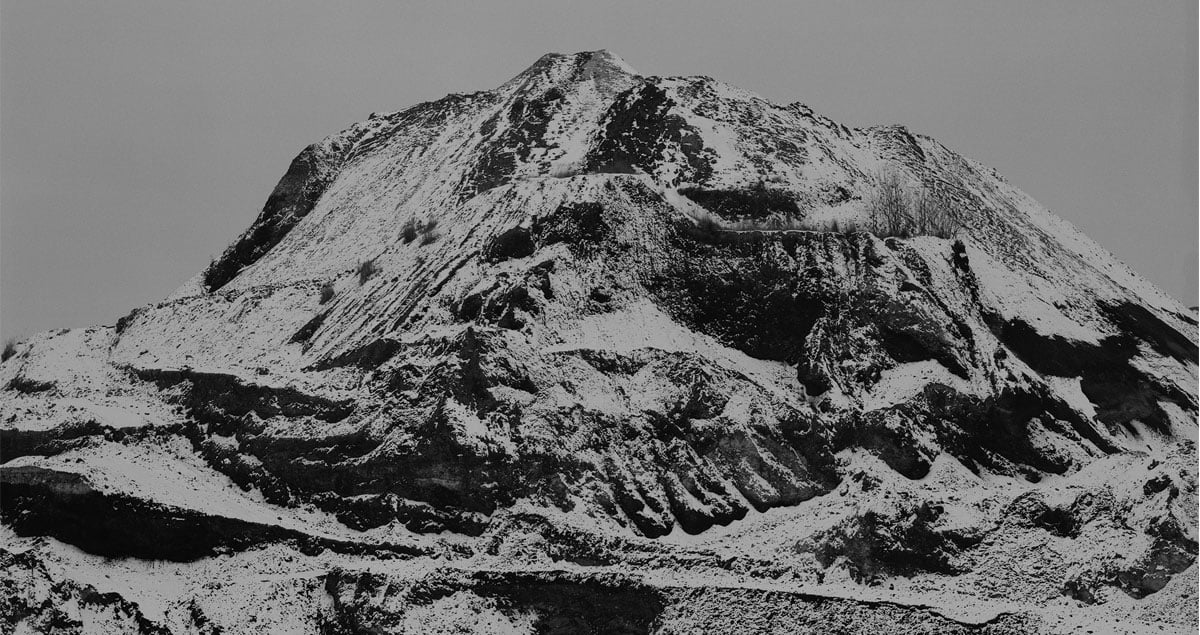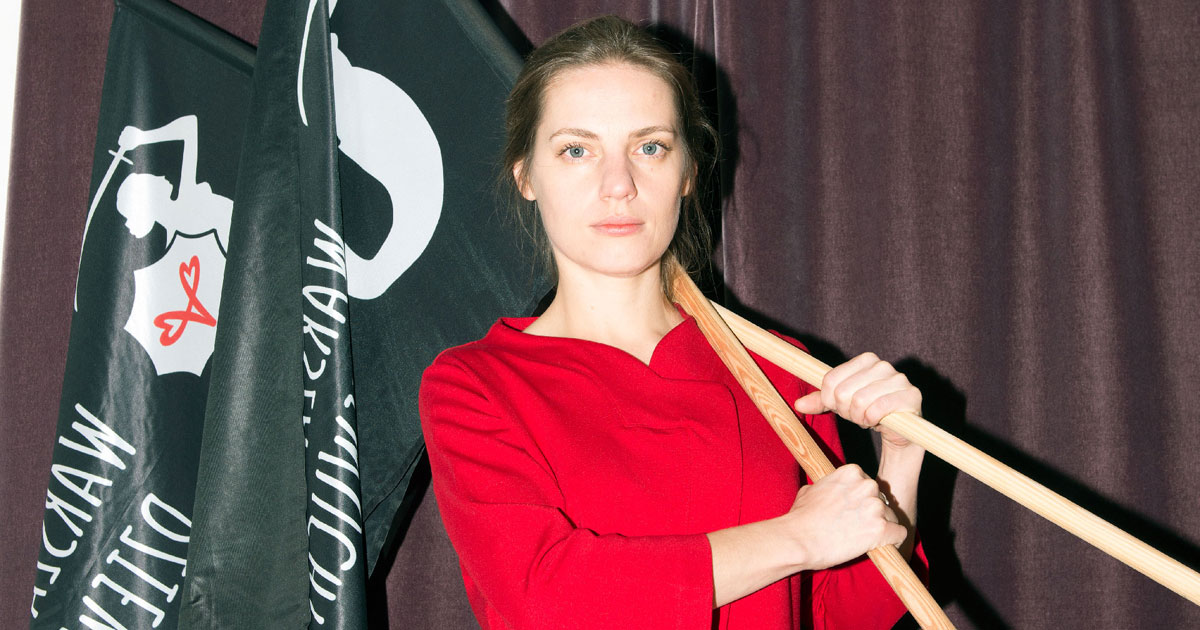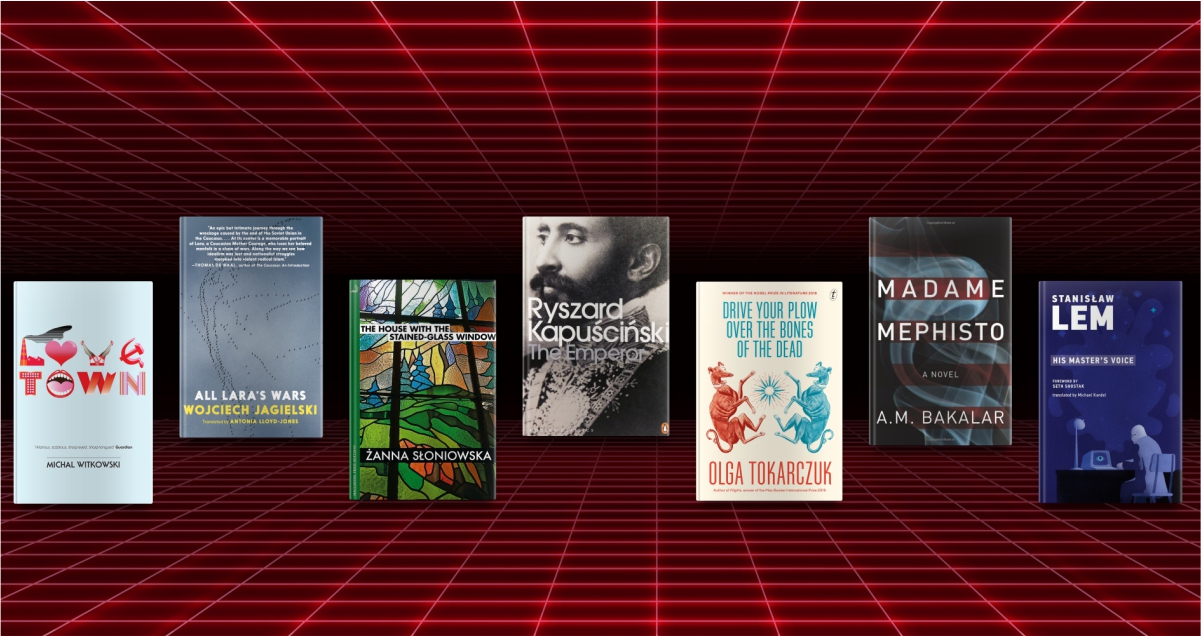Emerging in the late 19th Century, Young Poland saw a revival of traditional crafts as a remedy to foreign occupation. Though it is compared to the Arts and Crafts movement in Britain, there are notable differences between their origins, argues Joanna Kozlowska.
In the words of turn-of-the-century polymath Stanisław Witkiewicz, Polish art owes a lot to tuberculosis. The epidemics in the 1880s and 1890s saw the nation’s creative elite crowd to the remote hamlet of Zakopane, in the foothills of the Tatra mountains, to imbibe its health-giving highland air and avoid urban crowding. But this was not the only reason artists headed for the hills.
Wyspiański’s stained glass (1905) for Medical Society, Kraków. Contemporary recreation by artist and master-craftsman Piotr Ostrowski, made at the Young Poland Krakow Stained Glass Company (2017)
Far from the centres of political and administrative power, Zakopane brimmed with creative exchanges and transgressive debates on preserving Polish culture in the face of foreign occupation. The once-mighty Polish-Lithuanian Commonwealth had been wiped off the map in 1795, carved up between the neighbouring powers of Russia, Prussia, and Austria after decades of incursions and internal strife. As the 19th century drew to a close, the painter Wojciech Kossak praised “fiery Polish hearts flocking to [Zakopane’s] wonderful backwater, untouched by any of the scourges that had swept other parts of Poland… the place had never even seen Muscovites or Prussians, and Austrian rule ended in Nowy Targ.”
It is therefore not surprising that Zakopane became the cradle of the Young Poland movement, a modernising artistic current that nevertheless held up folk culture as a repository of “authentically Polish” sensibilities. Collapsing the distinction between fine and decorative arts, Young Poland saw in peasant art from the Tatra and Kraków regions a bulwark against the occupiers’ cultural influence, as well as the promise of a rejuvenated, egalitarian national consciousness. A recent exhibition at the London William Morris Gallery (Young Poland: an Arts and Crafts Movement, 1890-1918) sees the movement as the Polish twin to Britain’s own arts and crafts revival, spearheaded by Morris from the mid-19th century onwards.
Photograph of Stanisław Witkiewicz (far left) and the makers of the House Under the Firs architectural model (1899). Image courtesy Tatra Museum
According to the exhibition curators, Julia Griffin and Andrzej Szczerski, both movements saw arts and crafts as an expression of moral principles, and a means to bring beauty into people’s daily lives — no matter their social station. Both questioned 19th-century ideas of progress, reacting to what they saw as a hollowing out of communal bonds and popular culture. In Britain, lifestyles were ravaged by rapid industrialisation; in Poland — by the occupying powers’ policies aimed at suppressing local and national identity.
“Young Poland saw in peasant art a bulwark against the occupiers’ cultural influence, as well as the promise of a rejuvenated, egalitarian national consciousness”
A painter and architect by training, Witkiewicz led the Polish arts and crafts reform in Zakopane. His “Zakopane style” of house-building and interior design, drawing on folk patterns developed by the indigenous Tatra Highlander people, was soon reproduced across Poland’s historical lands. Artists and intellectuals extolled it as a hymn to “authentic” Polishness, urging that all the country be “covered with a highland roof”. Witkiewicz sought to adapt the humble Highlander hut to the tastes of the bourgeoisie now patronising Zakopane: his iconic designs, such as the House under the Firs (Willa pod Jedłami) or Koliba Villa (Willa Koliba; meaning “shepherd’s shelter”) boasted ornately decorated roof ridges, rafters, and door frames, as well as comfortable furniture covered in Highlander handicraft patterns.
For a scion of a feudal family, Witkiewicz was firmly democratic in his outlook. In a 1904 book laying out his artistic principles, he wrote that he wished to see “the heads of both the mighty and the poorest protected by roofs of a common style; churches, salons, chambers, and the poorest cottages gleaming brilliantly with the same beauty…” At the end of the 19th century, social classes blended more than ever before, and Witkiewicz helped blur old feudal divisions through art and design. He was often pictured sporting Highlander-style sheepskin coats; he also chose the folk storyteller Sabała as godfather to his firstborn son.
Outside of Zakopane, artists were likewise clamouring for change. The Kraków-based Stanisław Wyspiański, one of Young Poland’s foremost figures and the founder of the Polish Applied Arts Society, scandalised his bourgeois family with his marriage to Teodora Pytko, a local peasant woman. His literary colleague, Lucjan Rydel, likewise took a peasant wife; the Rydels’ wedding reception in the village of Bronowice inspired Wyspiański to pen the era’s defining dramatic work, The Wedding. Merging social satire and Gothic horror, the play asks probing questions about Polish national consciousness and class relations.
Indeed, many of the Young Poland designs could also be read as straightforwardly political. The Morris Gallery displays an upscale tea set with the cup handles curving arrestingly upward, in a nod to Highlander shepherd crooks. From Russian-ruled Warsaw to the Carpathians under Austria-Hungary, patriotic Polish bourgeoisie came to regard those as a vehicle for quiet domestic rebellion – the drawing-room equivalent of “covering the country with a highland roof”. Another striking example is Spring, a stained-glass design featuring sunlit wheat fields in the foreground to Kraków’s Royal Castle and Cathedral gleaming in the distance. The symbolism of this work, by the Kraków painter and designer Henryk Uziembło, runs deep: here is the spiritual reawakening of the Polish nation, tracing its traits and values to the common farmstead as much as the former seat of kings. Nature and Art, a frieze design by fellow Kraków native Józef Mehoffer, similarly makes no secret of its message. A richly-robed personification of Art directs the artist – depicted as a naked youth — towards the only worthwhile subject matter: the celebration of nature and rural life, embodied by a peasant girl in a simple Kraków costume.
Batik scarf. Image: Norbert Okołowicz/ National Museum in Kraków
Like the British Arts and Crafts movement, Young Poland saw a revival of traditional crafts as a remedy to social splintering, and a recipe for flourishing communities. Both movements sought to establish new models of society, celebrating individual creativity while regarding art as the expression of a communal essence. Yet, Morris and his followers extolled medieval designer-craftsmen as paragons of dignified labour, a world away from the numbing assembly-line work in Lancashire’s textile factories. In contrast, Polish artists had little need to harken back to a more or less imagined past. Poland’s relative lack of industrialisation meant that traditional crafts were alive and well, nourished by the same peasants and Highlanders Witkiewicz and Wyspiański chose to live among. Indeed, much like Morris and the celebrated British art critic John Ruskin, Witkiewicz and Wyspiański prized the “authenticity” of design, insisting that all elements of their decorative schemes be executed by trained craftspeople using local materials.
Image: Karol Kłosowski
Both Britain’s Arts and Crafts reformers and Young Poland artists followed through on their stated commitment to the applied arts. Wyspiański once expressed bemusement at being appointed the Professor of Decorative Arts at the Kraków academy, arguing that all art was decorative — not least his own oil canvas and stained-glass designs. (One of the latter, the soaring Apollo. Copernicus’ Solar System, can be viewed in the Morris Gallery, having ventured outside the Kraków Medical Society headquarters for the first time.)
Yet, for all its insistence on honouring peasant tradition, Young Poland’s visual language is distinctly forward-looking. Wyspiański’s abstracted, geometric flower forms, or the allusive simplicity of Karol Kłosowski’s paper cuttings inspired by rural window decorations stride boldly on into the future, foreshadowing a century of Polish industrial design. The Morris Gallery exhibition showcases later commercial work produced by members of the Kraków Workshops, a cooperative of artists and artisans founded in 1913. The “fine handiwork of various professions”, ranging from wall hangings to Christmas ornaments, shows a less reverential approach to folk inspirations, as their creators tweaked and blended traditional patterns in their search of a new, functional “national style”.
Christmas-tree decorations from the Kraków Workshops (1913 – 1926). Designs by Zdzisław Gedliczka. Artist’s recreations by Dr Anna Myczkowska-Szczerska based on original templates and surviving decorations. Image: Anna Olchawska & Tomasz Markowski
Without a doubt, the legacy of Young Poland lives on. More than a century after Poland’s independence was restored in 1918, the period’s vision of Polishness as rooted in folk culture — however it may vary across regions — has endured. From mock-Highlander style buildings cropping up across the country, to traditional embroidery patterns making their way onto catwalks, the vocabulary of Polish design often seems to have been mapped out by Wyspiański and Witkiewicz. Within museum walls, too, Young Poland remains among the most popular periods in Polish art history, with Kraków holding particularly rich collections. A new branch of the National Museum of Kraków, a co-organiser of the London exhibition, opened in the Feliks Jasieński-Szołayski House in the autumn of 2021; it charts Young Poland’s impact rippling through decades of Polish applied art and architecture. English-speaking audiences may find the Arts and Crafts connection especially intriguing — yet Mehoffer’s Madonnas wrapped in peasant shawls, Wyspiański’s flowering church ceilings, and Kłosowski’s exquisite lacework more than stand up on their own. Young Poland’s lush colours, richly imaginative themes, and progressive social messaging have made the period a firm favourite with its homeland’s gallery-going public. Far from being seen as inward-looking or crassly nationalistic, Young Poland’s vision of an egalitarian, forward-looking cultural community continues to stir imaginations and hopes for the future.
Image: Stanisław Wyspiański/ National Museum in Kraków and the Franciscan Church


